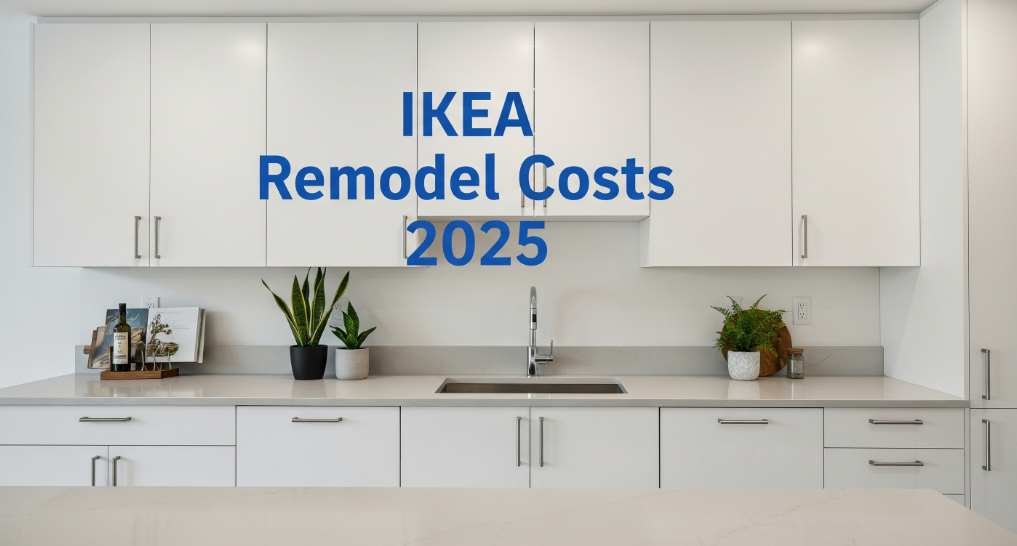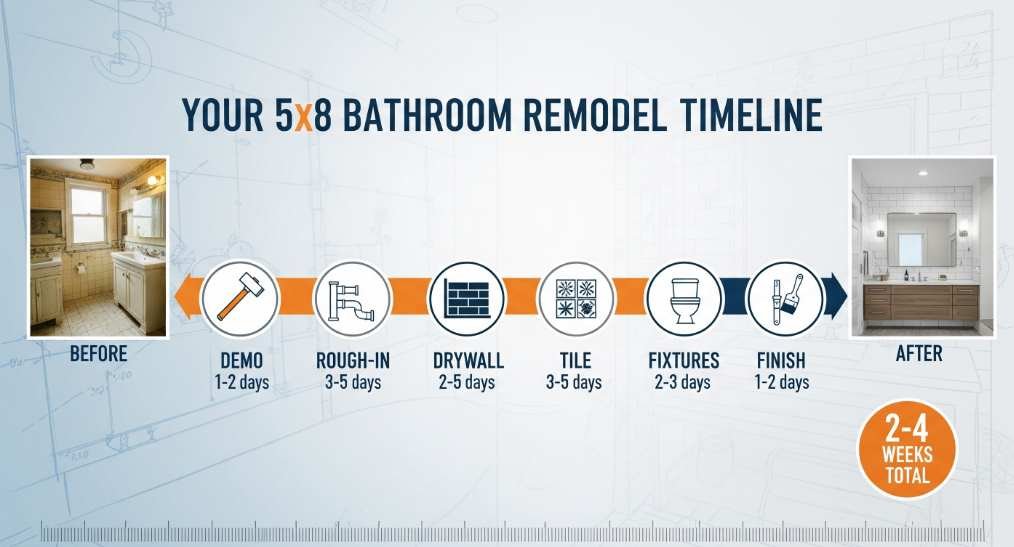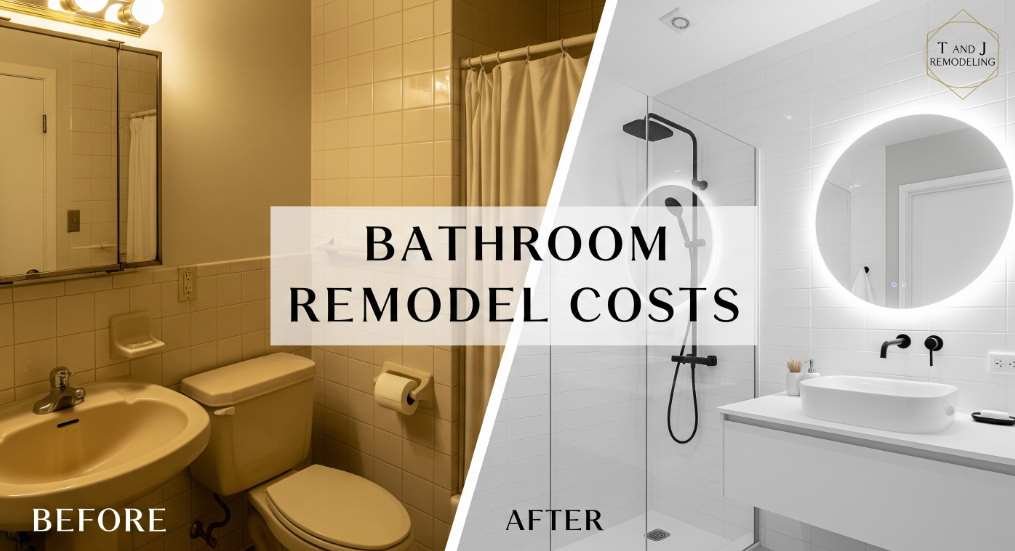Table of Contents
TogglePlanning a bathroom remodel is exciting until you realize you won’t have access to your shower for weeks. The big question every homeowner asks is: How Long Does It Take to remodel a Bathroom? The answer isn’t one-size-fits-all, but we’ll break it down so you know exactly what to expect.
The simple answer: A full bathroom renovation typically takes 5 to 8 weeks from start to finish. Smaller updates might wrap up in 1 to 2 weeks, while partial remodels usually fall somewhere in the 3 to 4 week range. But here’s the catch: these timelines assume everything goes smoothly, and we both know that rarely happens in home renovation.
Let’s walk through what affects your timeline and how to prepare for both the expected and unexpected.
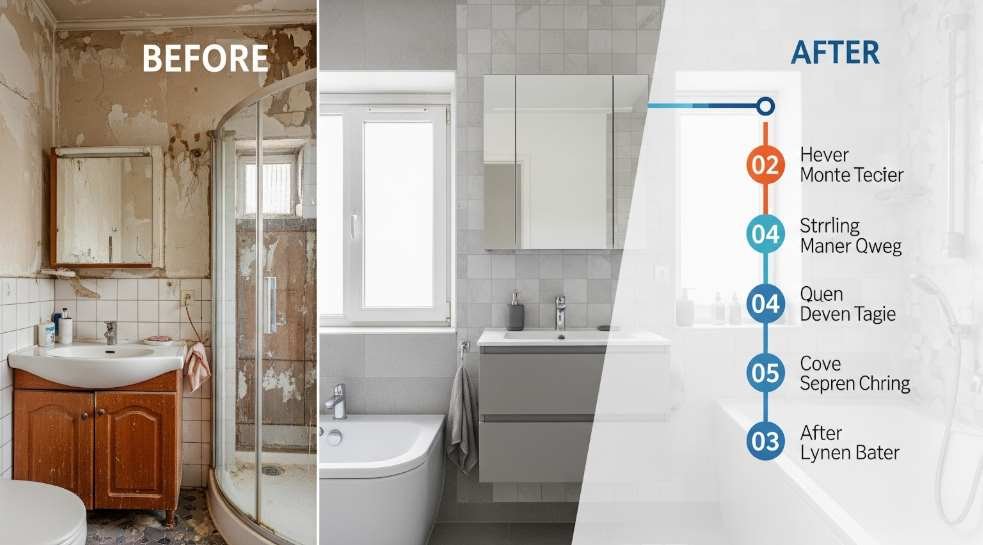
Understanding Your Remodel Type
Not all bathroom projects are created equal. The scope of work dramatically affects how long your renovation takes.
Cosmetic updates include painting, replacing fixtures like faucets and hardware, installing new mirrors, and updating lighting. These quick projects typically take one to two weeks because they don’t involve structural changes or major systems work.
Partial remodels include replacing the vanity and sink, updating the toilet, installing new flooring, or refreshing wall treatments. You’re making meaningful changes, but you’re not touching plumbing rough-in or electrical systems extensively. Plan for three to four weeks.
Full bathroom renovations mean everything comes out: flooring, fixtures, walls, sometimes even the layout. You’re relocating plumbing, updating electrical systems, and addressing structural issues. These projects require careful sequencing and multiple trade inspections. This is where you hit that 5 to 8 week average.
Master bathrooms and primary baths typically take longer than powder rooms or guest bathrooms simply because they’re larger and more complex. A small powder room remodel might finish in two weeks, while a master bath could stretch to three months if you’re doing a major reconfiguration.
Breaking Down the Construction Timeline
Understanding what happens each week helps you plan your life around the renovation.
Weeks 1 to 2: Demolition and Discovery
The first phase is tearing out everything. Your contractor removes old flooring, fixtures, vanities, and sometimes cabinets and walls. If you’ve got an older home, this is when surprises typically emerge. Hidden water damage behind walls, outdated plumbing, or structural issues get discovered during demolition. Once the old bathroom is gutted, inspectors will check your home’s framing, electrical, and plumbing systems. If any issues exist, they’ll need repair before work continues. In Wisconsin homes, especially, moisture damage from old shower installations is common and adds time to the project.
Weeks 2 to 3: Rough-In Work (Plumbing and Electrical)
Here’s where licensed plumbers and electricians move in. They run new supply lines, drain pipes, vent stacks, and electrical wiring according to your new layout. This phase requires precision; everything must be positioned correctly before the walls close up. If you’re moving plumbing fixtures (like relocating your toilet or shifting the shower), this work takes longer. Inspections happen after the rough-in is complete, and inspectors won’t approve the next phase until everything passes code.
Weeks 3 to 5: Framing, Waterproofing, and Prep
Carpenters build new walls or frame recessed shelving. Waterproofing comes next, critical for keeping your bathroom dry and preventing future damage. Cement board or waterproof membranes go down in shower areas. Insulation, drywall, and primer all happen during this phase. This is also when your tile or wall prep work begins.
Weeks 5 to 7: Installation and Finishing
Tile setters lay floors and walls. Fixtures, sinks, toilets, faucets, and light fixtures get installed. Vanities are mounted. Mirrors and hardware go up. Painters finish any trim or accent walls. This phase feels like real progress because your bathroom is starting to look like your actual bathroom again.
Week 8: Final Touches and Inspection
Caulking, grouting details, and any touch-ups happen now. Your contractor schedules a final inspection with the building department. Once everything passes, you get your certificate of completion. This is when you can finally take your first shower in your new bathroom.
This timeline assumes continuous work and no major complications. In reality, contractors juggle multiple projects, material deliveries get delayed, and unexpected issues pop up, all of which add weeks.
Seven Factors That Extend Your Timeline
Some delays are predictable; others surprise everyone.
Hidden issues discovered during demolition are the number one timeline killer. Old, corroded plumbing is hiding behind walls. Structural rot from previous leaks. Mold. Electrical systems that don’t meet modern codes. When these surface, your contractor must address them before moving forward. A small water damage repair might add a week; major structural work could add three weeks or more.
Permit and inspection delays happen everywhere. Some municipalities approve permits quickly; others take weeks. Getting inspectors scheduled between your contractor’s work and other local jobs can push timelines back. Building officials might require additional work before approving the next phase, especially if code violations emerge.
Material shortages and lead times have disrupted construction nationwide. Custom cabinetry, specialty tile, or high-demand fixtures sometimes take 4 to 6 weeks to arrive. Your contractor can’t proceed with installation until materials are on-site. Always confirm material availability and delivery schedules before signing a contract.
Design changes mid-project feel small but add up fast. Deciding mid-demo to relocate the toilet adds plumbing work. Changing your tile choice requires new orders and delivery waits. Upgrading lighting mid-project means electrical adjustments. The phrase “while we’re at it” often extends timelines by weeks.
Moisture damage discovery is common in bathrooms. Behind shower walls, beneath old flooring, and around fixtures, previous leaks leave damage. Your contractor can’t install new waterproofing over damaged areas. Repairs must happen first, which costs time and money.
Contractor scheduling conflicts happen when your remodeling company is managing multiple projects. A delay on one job ripples to yours. Winter weather, supply chain issues, or a crew member’s illness can shift schedules. Professional contractors always build buffer time, but honest communication about realistic timelines matters.
Building code changes or inspector requests during your project can require modifications. Ventilation fans might need more capacity. Electrical outlets must be in specific locations. GFCI protection is required in certain areas. These updates ensure safety but extend your timeline.
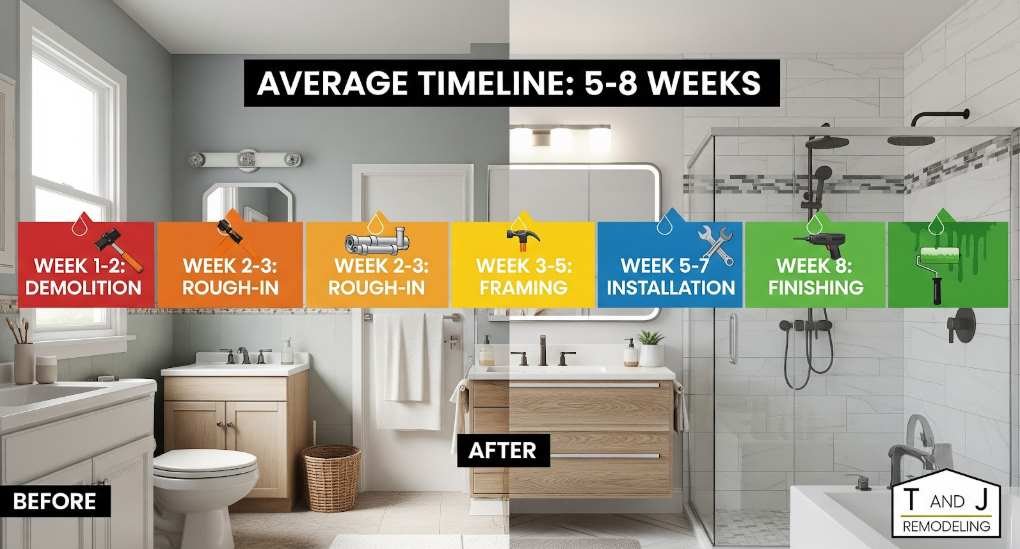
How to Keep Your Project On Track
You can’t eliminate every delay, but you can minimize them.
Work with experienced contractors. T and J Remodeling has completed hundreds of bathroom remodels in Waukesha and the surrounding areas. Experienced teams know typical timelines, plan for common issues, and communicate clearly about delays. They’ve seen everything and know how to problem-solve quickly.
Plan for permits and inspections. Get your permits before work starts. Understand your local building department’s review timeline. Schedule inspections as soon as your contractor completes each phase. Don’t wait for the inspector to call you.
Make decisions early. Finalize your design, finishes, fixtures, and material selections before demolition begins. Every decision made mid-project delays things. Know your tile, your faucet, your lighting, and your color scheme going in.
Have a contingency budget. Set aside 10 to 20 percent of your project budget for unexpected costs. If your contractor finds hidden damage, you can address it without stopping work while you find extra money. Hidden problems are inevitable in older homes. Being prepared means they won’t halt your project.
Maintain clear communication. Weekly check-ins with your contractor prevent surprises. Ask about the schedule, upcoming phases, and any concerns. If delays occur, address them immediately. The more you communicate, the better your contractor can keep things moving.
Can You Use Your Bathroom During a Remodel?
Most full bathroom remodels make your bathroom unusable for at least part of the project. During demolition and rough-in phases, you absolutely cannot use it. Once fixtures are installed, you can use a toilet, but showers are off-limits until waterproofing and finishing are complete.
For homes with multiple bathrooms, this is manageable. For single-bathroom homes, it’s a genuine inconvenience. Many homeowners use a gym membership, stay with family, or arrange temporary shower solutions during the renovation.
The answer: Talk to your contractor about phasing the work. Some renovations can be structured to keep certain functions operational longer, though this sometimes extends the overall timeline.
Why Choose T And J Remodeling for Your Bathroom Project
Bathroom remodeling services in Waukesha require local expertise. Our team understands Wisconsin homes, older construction common in the area, and local building codes. We’ve managed countless timelines in homes throughout Waukesha, Brookfield, and New Berlin.
We’re transparent about timelines from day one. You’ll get a detailed schedule with realistic expectations. When issues arise, and they do, we address them quickly and keep you informed. Our goal is to deliver your new bathroom on time, on budget, and with the quality you deserve.
If you’re considering other home remodeling needs, we handle kitchen remodeling and other projects, too. Whatever you need, we’re your local partner.
FAQ: Your Bathroom Remodel Timeline Questions Answered
How long does a simple bathroom remodel take?
A simple cosmetic update, painting, new fixtures, and refreshed décor typically takes one to two weeks. You’re not changing plumbing or electrical systems, so the work moves quickly. However, if your project includes new flooring or tile, add another week.
What causes bathroom remodels to take longer than expected?
Hidden problems like water damage, corroded plumbing, or structural issues discovered during demolition are the biggest culprits. Permit and inspection delays, material shortages, design changes mid-project, and contractor scheduling also extend timelines by 10 to 20 percent, for contingencies.
Can you use your bathroom during a remodel?
During demolition and rough-in phases, your bathroom is completely unusable. Once fixtures are installed and waterproofing is done, you might use a toilet, but showers aren’t available until finishing is complete. For single-bathroom homes, this is a genuine inconvenience lasting several weeks.
How long do bathroom permits take to get?
Permit timelines vary by municipality. Some areas approve permits in a week or two; others take four to six weeks. Your contractor can usually handle the application process. Always factor permit and inspection time into your project timeline before starting work.
What’s the difference between a 2-week and an 8-week bathroom project?
A two-week project is typically a cosmetic update with no structural changes or plumbing work. An eight-week project involves complete renovation, major plumbing or electrical work, and time for inspections and material delivery. The scope of work determines duration. Larger, more complex projects with system changes take significantly longer than surface-level updates.

